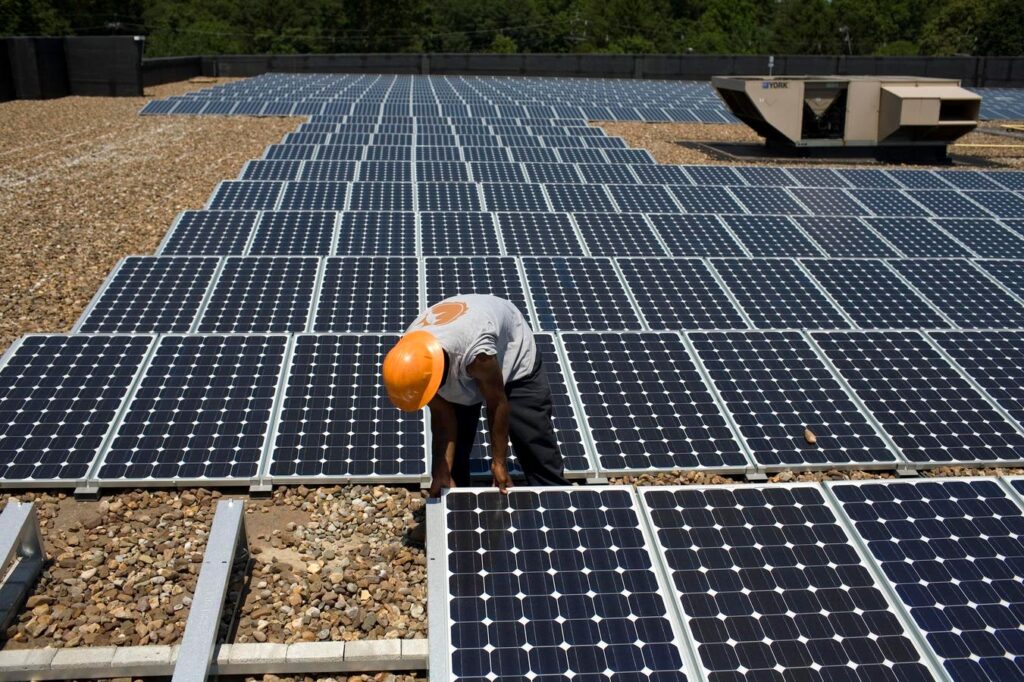Energy sector jobs in renewables are growing (Photo by Robert Nickelsberg/Getty Images)
The energy sector faces a talent crisis. Despite concerns over Trump’s move to cut Inflation Reduction Act funding for renewables, experts predict that long-term energy trends will hold steady, thanks to private investments, global momentum in renewables and innovation efforts from oil and gas companies to reduce their environmental impact.
With industries competing for skilled talent, workforce shortages are a growing economic challenge in energy, AI, and IT. Seventy-one percent of energy employers struggle to find skilled talent, as per Manpower. McKinsey’s report projects energy demand to double by 2025, affecting both fossil fuels and renewables.
Renewables are a key driver of energy job growth. Wind turbine service technician jobs will grow by 60% and solar installer roles by 48%, according to the U.S. Bureau of Labor Statistics. Rapid growth has outpaced the talent pipeline, affecting entry-level and executive positions. Fossil fuels remain significant and compete for talent.
Build Skills Through Local Partnership
Rural areas producing the most oil, gas, and renewable energy face hurdles in finding skilled workers, says Brian Korgel, Director of The University of Texas at Austin Energy Institute. The Permian basin, a top-producing region, is largely rural, impacting staff availability. Even urban areas lack required skills.
Partnering with schools for micro-credential programs fast-tracks workers into the sector, Korgel notes. LNG companies in places like Corpus Christi offer tailored training. Large-budget oil and gas companies collaborate with universities on workforce development, providing internships and apprenticeships.
Renewable energy firms, despite tighter margins, benefit from educational partnerships, reducing recruiting costs and creating hiring pipelines. Enhanced visibility and relationships with students bring long-term advantages.
Improve Awareness And Perception of Energy Jobs
A lack of awareness about energy jobs hinders workforce expansion. Heat networks in the UK illustrate this gap. Bindi Patel, Head of Customer Experience & Communications at Vattenfall Heat UK, notes that job opportunities in heat networks are less known compared to solar and wind.
Companies must highlight transferable skills from established fields like construction and engineering to energy jobs, especially in emerging technologies. Firms that effectively communicate this may see improved recruiting outcomes.
Outreach, Inclusion and Retention
Reaching untapped talent pools, such as women and Black or African American workers, expands workforce options. Women comprise 26% of the energy workforce, lower than their 47% national share. The latest U.S. Energy & Employment report shows their 19% representation in new energy jobs. Black or African American workers hold 9% of energy jobs, less than their 13% national share.
Offering competitive employee growth opportunities and fostering an inclusive workplace enhances retention. The best oil and energy companies for women prioritize equal opportunities, paid time off, mentoring, and respectful work environments to attract underrepresented talent.





